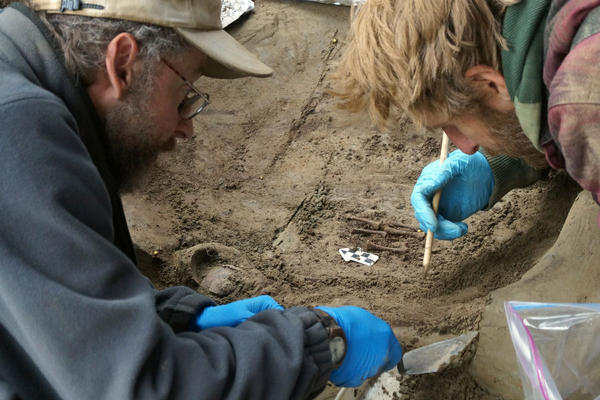

Researchers say that the skeletons, which are approximately 11,500 years old, are the earliest known human remains from the North American subarctic.
It is rare that we are able to glimpse inside the mortuary traditions of ancient civilizations. Even less common is seeing the intimate fashion in which our predecessors handled the horrible task of infant mortality. A recent discovery in Alaska, has given us just such an opportunity.
An international team of researchers, led by University of Alaska anthropological archaeologist Ben Potter, uncovered the remains of two infants in 2013 while excavating the Paleolithic Upward Sun River archaeological site near the Tanana River in central Alaska. The team published their findings online Monday in the Proceedings of the National Academy of Sciences.
The two infant skeletons were found carefully positioned on their backs alongside tools and decoratively carved antlers that had been coated with ochre, suggesting that their hunter-gatherer families likely mourned and ritualized their loss in similar ways to modern humans. What’s more, there is some evidence to suggest that the two may have been twins and that the first to die may have been later exhumed to be buried alongside the other, the researchers speculated.
Read the full story: Ice Age infant burial ground offers clues to life for early Arctic settlers
What makes this discovery even more unique is the fact that the burial pit for these two tiny bodies was located below the cremated remains of a 3-year old. The cremation site was found in 2010.
“One of the most intriguing aspects of the site is the differential mortuary treatment of infants and children in the burial and overlying cremation,” the researchers write. The different treatment of the remains may hold some cultural clues about how paleoindians viewed child development in terms of “naming, ensoulment, or other ideological factors.”









